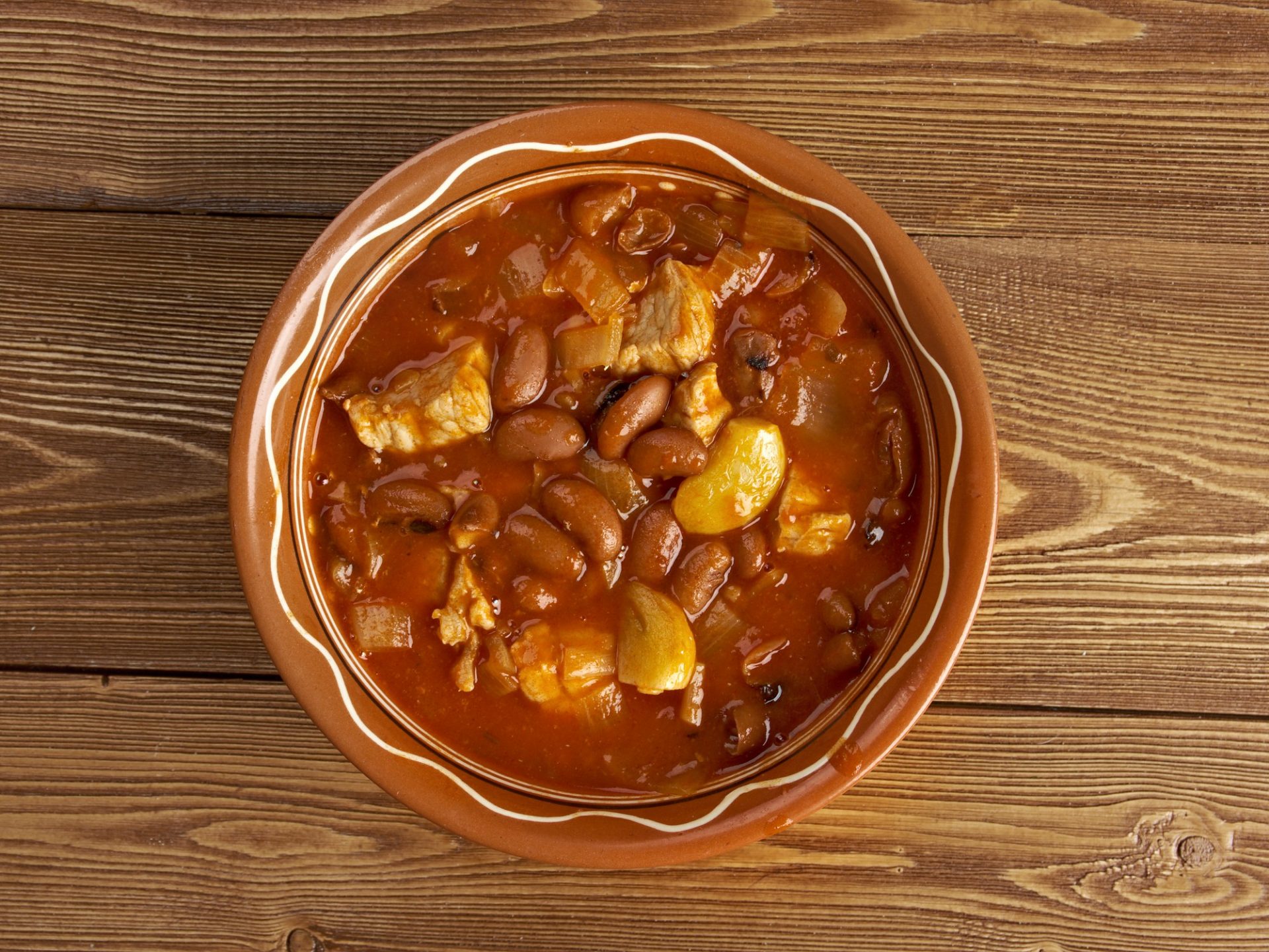Northern Mexico’s frijoles charros is a tasty, filling soup. You could also hear people refer to this dish as cowboy beans because the Spanish word for Mexican cowboy is charro.
These aren’t your typical spoonable refried beans from a hot-plate Mexican restaurant. Toeing the line between soup and stew, frijoles charros are wetter in texture. These aren’t the traditional hot-plate refried beans that can be spooned out. The texture of frijoles charros is wetter and more similar to a stew than a soup. They are frequently moist enough to be served with a spoon in a bowl.
Frijoles charros is a very dynamic dish because it can be prepared both indoors and also outdoors as a camp dish.
Camp Cooking
The primary flavours in this are spice and smoke. The spice is produced by fresh chilies (I use jalapenos or serranos). The necessary smokiness can be obtained in a few different ways. The first option can be the simplest depending on your circumstances: A campfire is used to cook them. Frijoles charros make a fantastic dish for camping because, after all, that’s why they were created in the first place. For the second option all you need is time, a beautiful cast iron Dutch oven, and hot embers. The beans will cook with lots of smokiness if the cover is kept slightly cracked throughout.
Smoking Indoors
If you are making the dish indoors, you have a different option for getting a smoky flavour. Most recipes only call for bacon. Some of them contain canned tomatoes that have been fire-roasted. These two choices are both excellent. However, I prefer to start with whole tomatoes and grill them myself for more flavour.It is a really easy process. Use a pair of tongs to rotate ripe Roma tomatoes over the flame of a gas burner or on top of a hot grill until their skins have turned black and are beginning to peel away. It’s even easier if you have a handheld torch, place the tomatoes in a pan and torch them, until they are blistered all over. (People who don’t have live fire in their kitchens have it a little harder; in those situations, just use canned fire-roasted tomatoes).
Making the dish base
The dish’s preparation begins with rendering bacon fat in a Dutch oven, followed by softening onions and chilies. Add a few minced garlic cloves, the tomatoes, and stir to combine. By adding the garlic after the onions and peppers have been cooked, the burn-prone garlic won’t brown too much.
Following a slight reduction of the aromatic base, add the beans, cooking liquid (I use chicken stock, though water works just fine), a generous sprinkle of salt (contrary to popular opinion, salt will not cause beans to toughen as they simmer), a few bay leaves, and a stem of epazote.
The beans were cooked in several ways that I tested. Some beans, like black beans, don’t need to be soaked before cooking, but unless you’re going to mash your pinto beans into refried beans, I suggest soaking them first. This will help them cook up tender and creamy without falling apart. Using canned beans in this recipe works surprisingly well if you’re in a hurry. Just drain and rinse them, reduce the amount of liquid by 50%, and cook the beans with the aromatic spices for a sufficient amount of time so they can absorb some flavour.
However, soaking dry beans in salted water for an entire night before boiling them the following day is the finest method. To reach a completely soft, creamy consistency, pinto beans only need to be soaked for around 45 minutes.
There isn’t much more to it, actually. When the beans are done, alter the consistency to your preferred taste. If you prefer soupy dishes, consider a broth with whole beans. Season and serve (with a sprinkle of chopped cilantro). If you want it more stew-like, mash up some of the beans with an immersion blender.
Ingredients
- 450g dried pinto beans
- Salt
- 6 cups (1.4L) homemade or store-bought low-sodium chicken stock
- 2 bay leaves
- 2 sprigs epazote (optional)
- 340g diced bacon
- 1 medium-sized white or yellow onion, diced
- 2 serrano chilies or 1 jalapeño, minced (remove seeded and deribbed if you prefer less heat)
- 3 medium-sized cloves garlic, finely minced
- 2 (400g) cans diced fire-roasted tomatoes
- Large handful chopped fresh cilantro leaves and fine stems
Directions
- Fill a large bowl with cold water to cover the beans by at least four inches. Stir in 2 tablespoons (18g) of salt to dissolve. Allow it to soak for about 8 to 12 hours. Rinse and drain.
- In a large Dutch oven, combine the beans, stock, bay leaves, 2 teaspoons (6g) salt, and epazote (if using). Over high heat, bring to a boil, lower the heat to a simmer, cover, and cook for 45 minutes or until the beans are just soft.
- Meanwhile, in a 12-inch stainless steel or cast iron skillet over medium-high heat, brown the bacon. Cook, stirring constantly, for 5 minutes, or until the fat has rendered and the bacon has begun to brown around the edges. Cook, stirring constantly, until the onion and chilies are softened and starting to brown, about 4 minutes. Cook, stirring constantly, until garlic is fragrant, about 30 seconds. Cook, stirring and scraping up browned bits from the bottom of the pan, for about 3 minutes, or until the liquid thickens and the mixture begins to sizzle.
After taking the lid off the Dutch oven, add the bacon-tomato combination and simmer the beans for about 20 minutes, stirring regularly, until they are thoroughly creamy and the liquid has thickened into a rich, creamy broth. Season with salt. Garnish with cilantro after removing the bay leaves. For up to a week, beans can be kept in the refrigerator.

